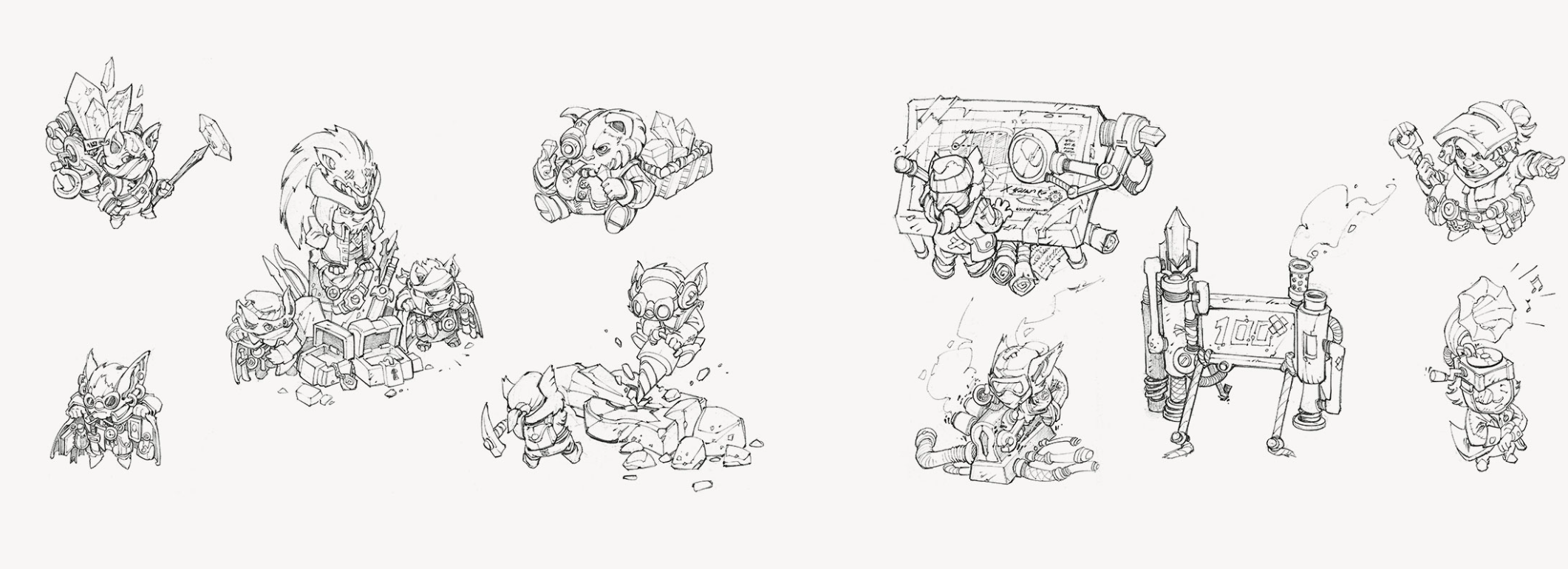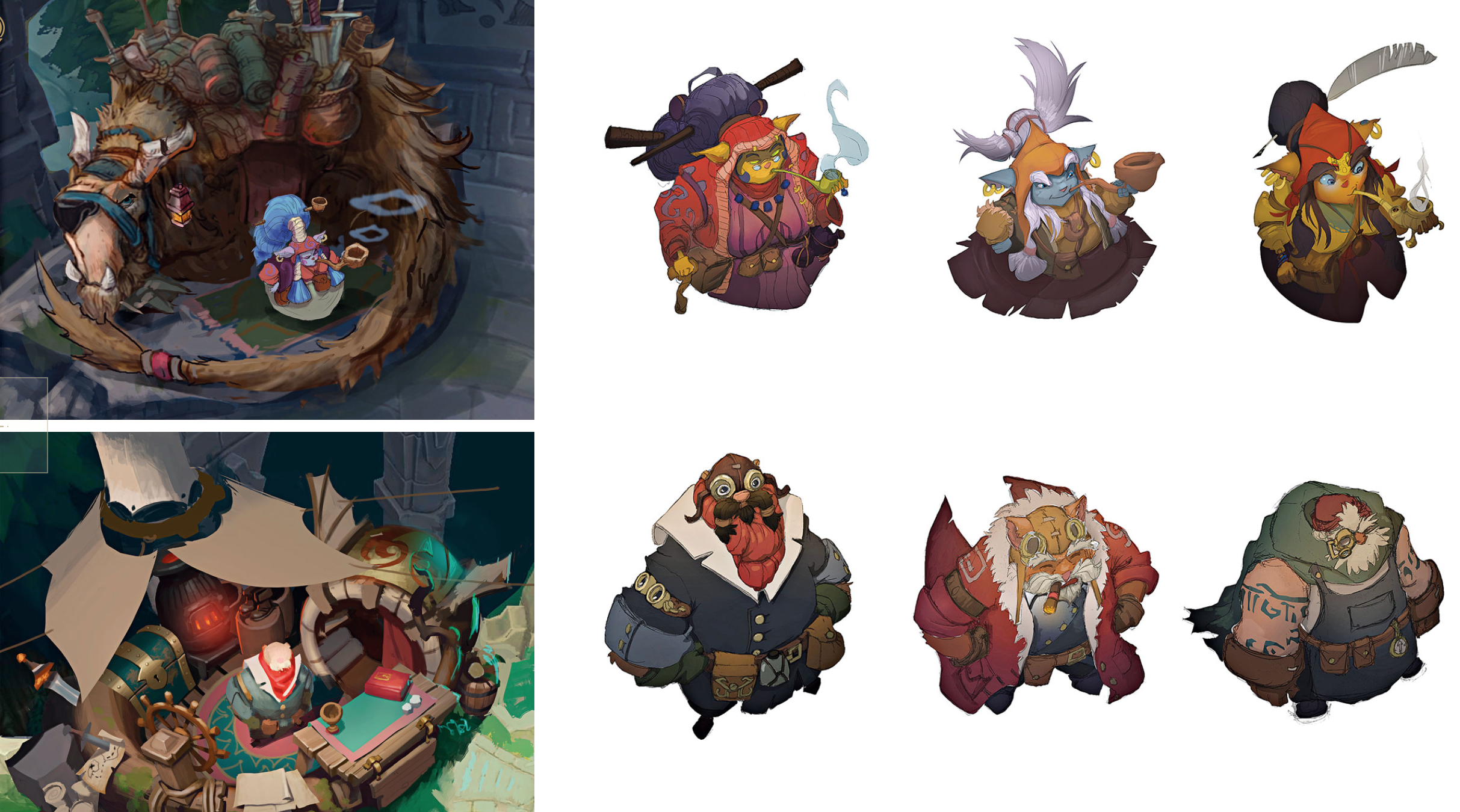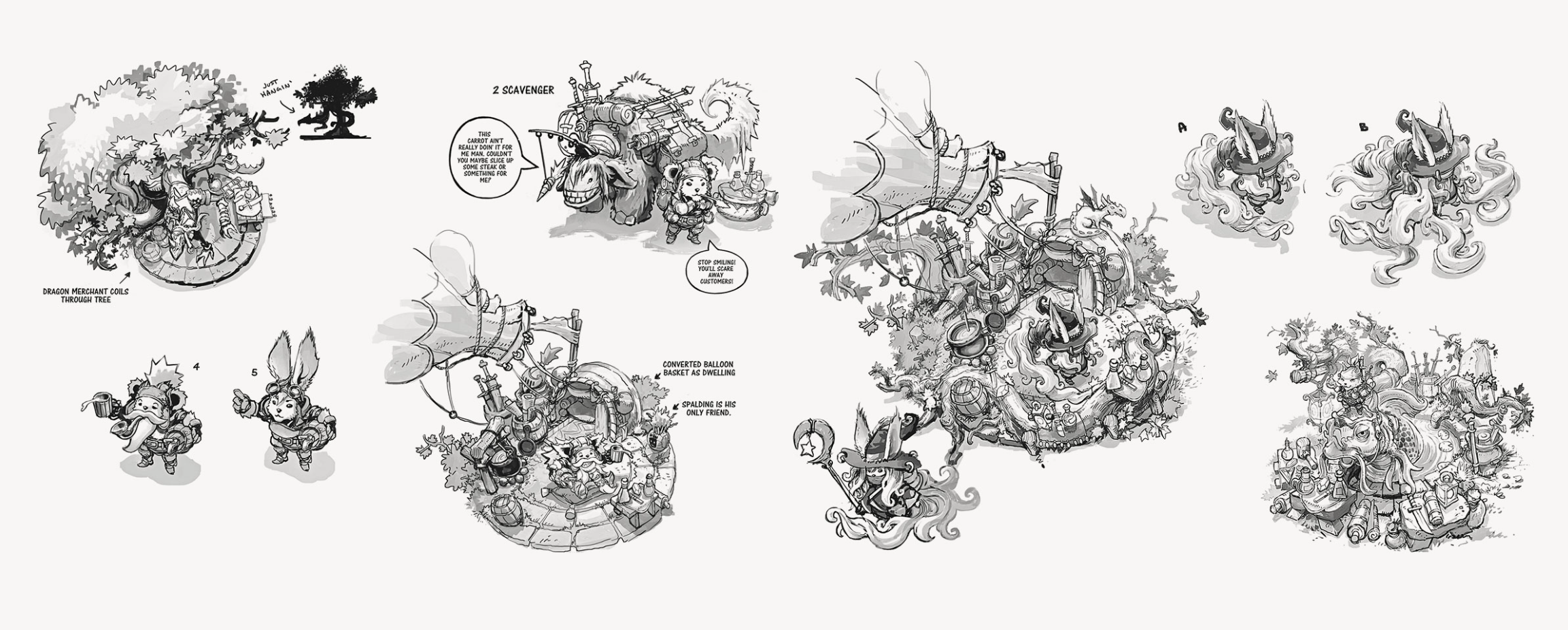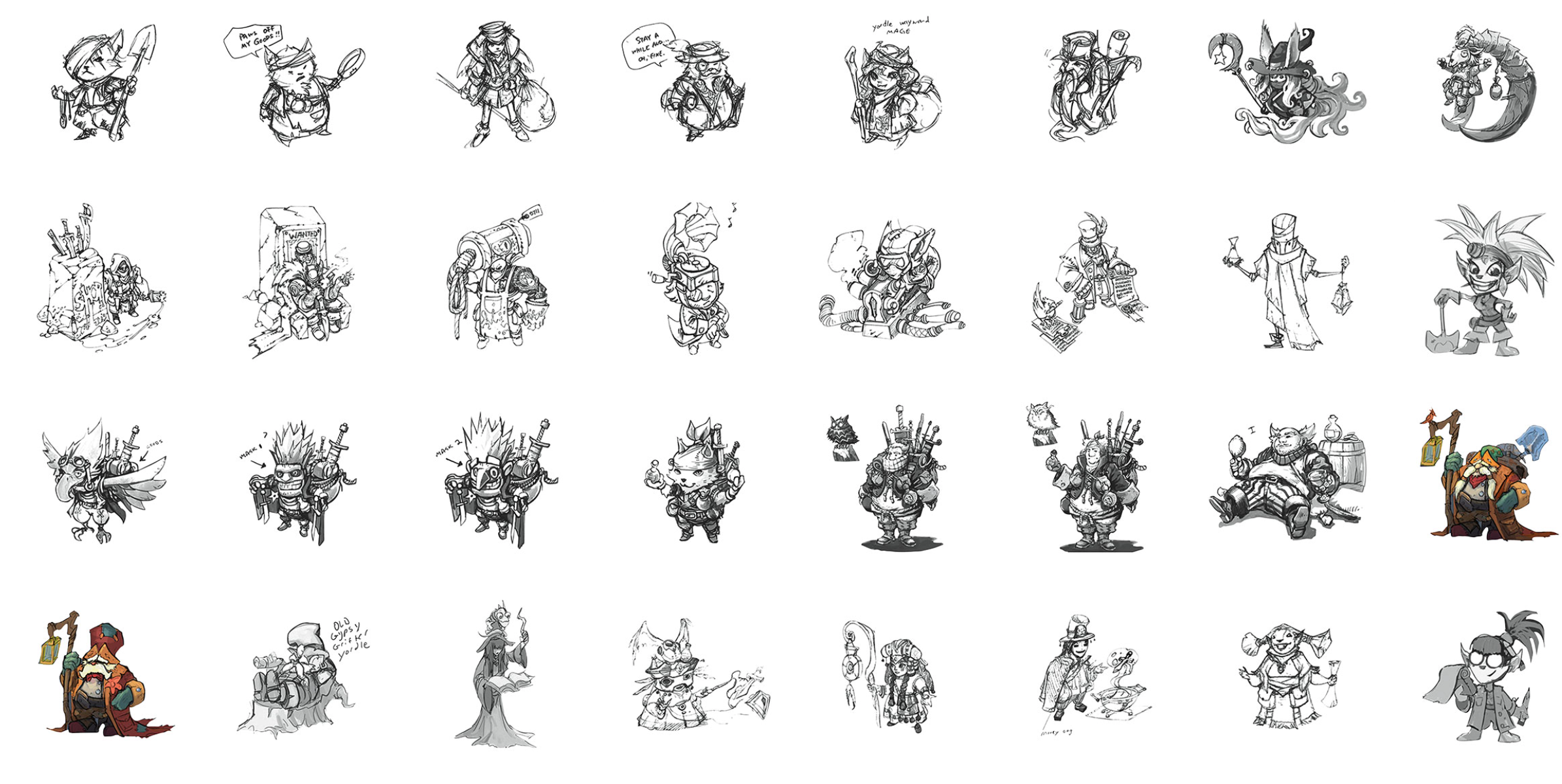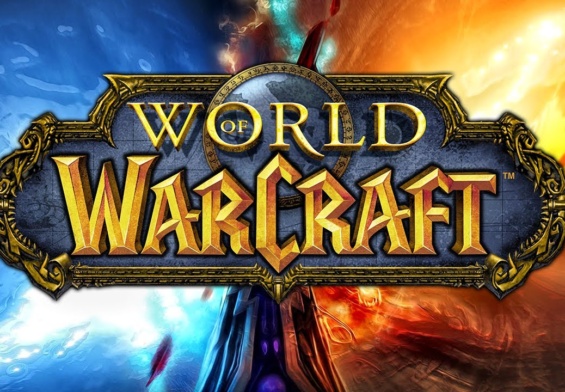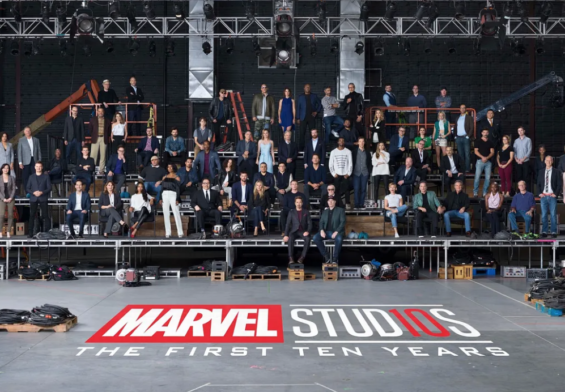ENVIRONMENTS Summoner’s Rift
The Rift is comprised of two sides: red and blue. The blue side represents “order”, as suggested by its stone tablets inscribed with arcane text. Its defensive structures (turrets) are massive replicas of the paladins thought to have once kept Runeterra safe from magic.
The red side is a more magical, chaotic place. Instead of the blue side’s legal tablets, charms are inscribed in the stone floor of the red side’s fountain and abandoned weapons are littered throughout the forest. We didn’t want it to look more evil than the blue side, so its jungle is populated by friendly woodland critters(just like the blue side), and its red buff is guarded by an owl, suggesting knowledge and wisdom amidst the chaos.
Environment—Blue Base

The creators of the blue side base attached symbolic meaning to the image of a stag. Ornate curled-horn designs are prevalent in the blue inhibitors and the swirling stone that makes up the wall surrounding the base.
If you have a culture that’s been around for a long time, the people of that culture innately weave their vision of who they are in their architecture or their sculptures.
—Oliver Chipping, Lead Artist
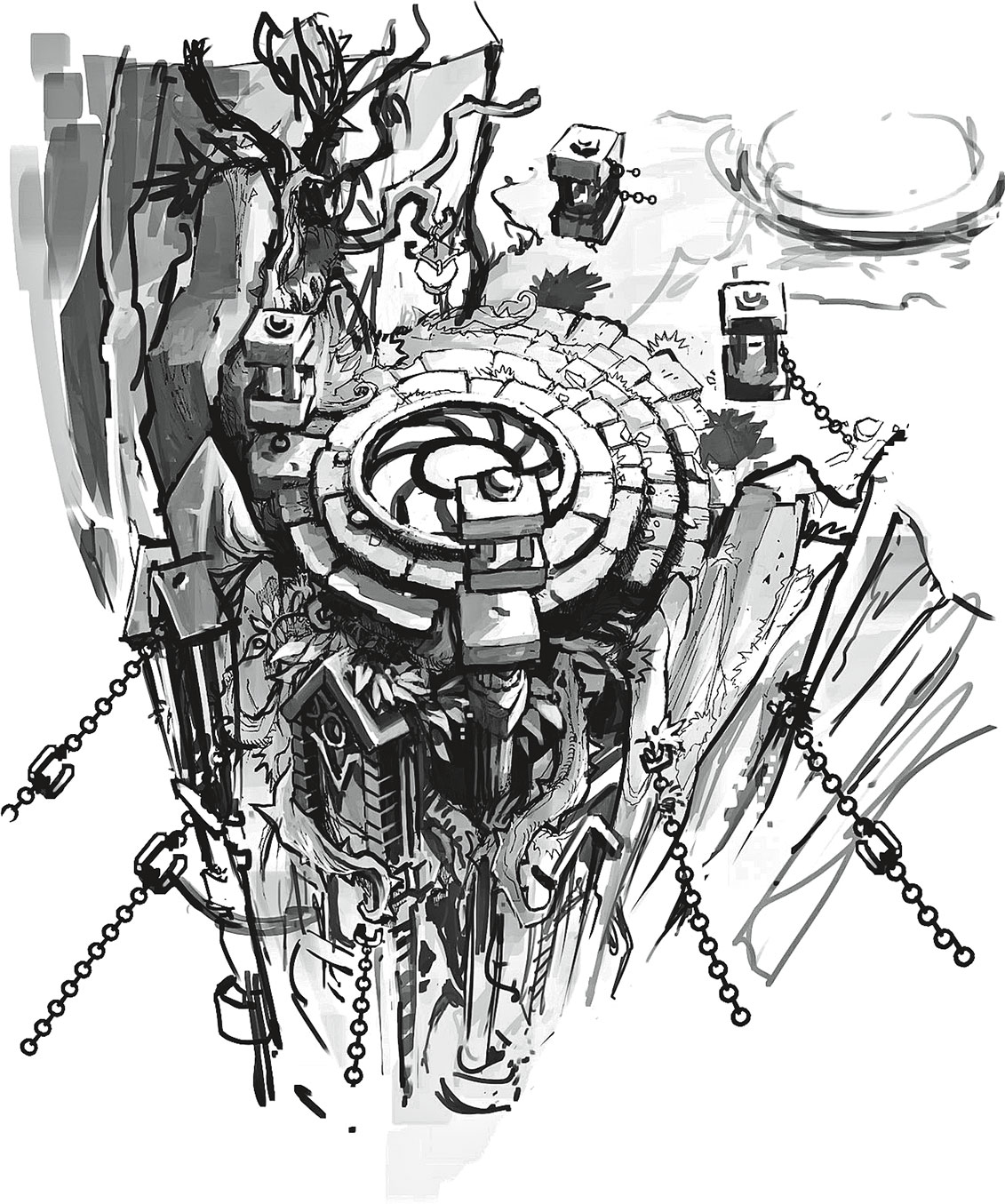
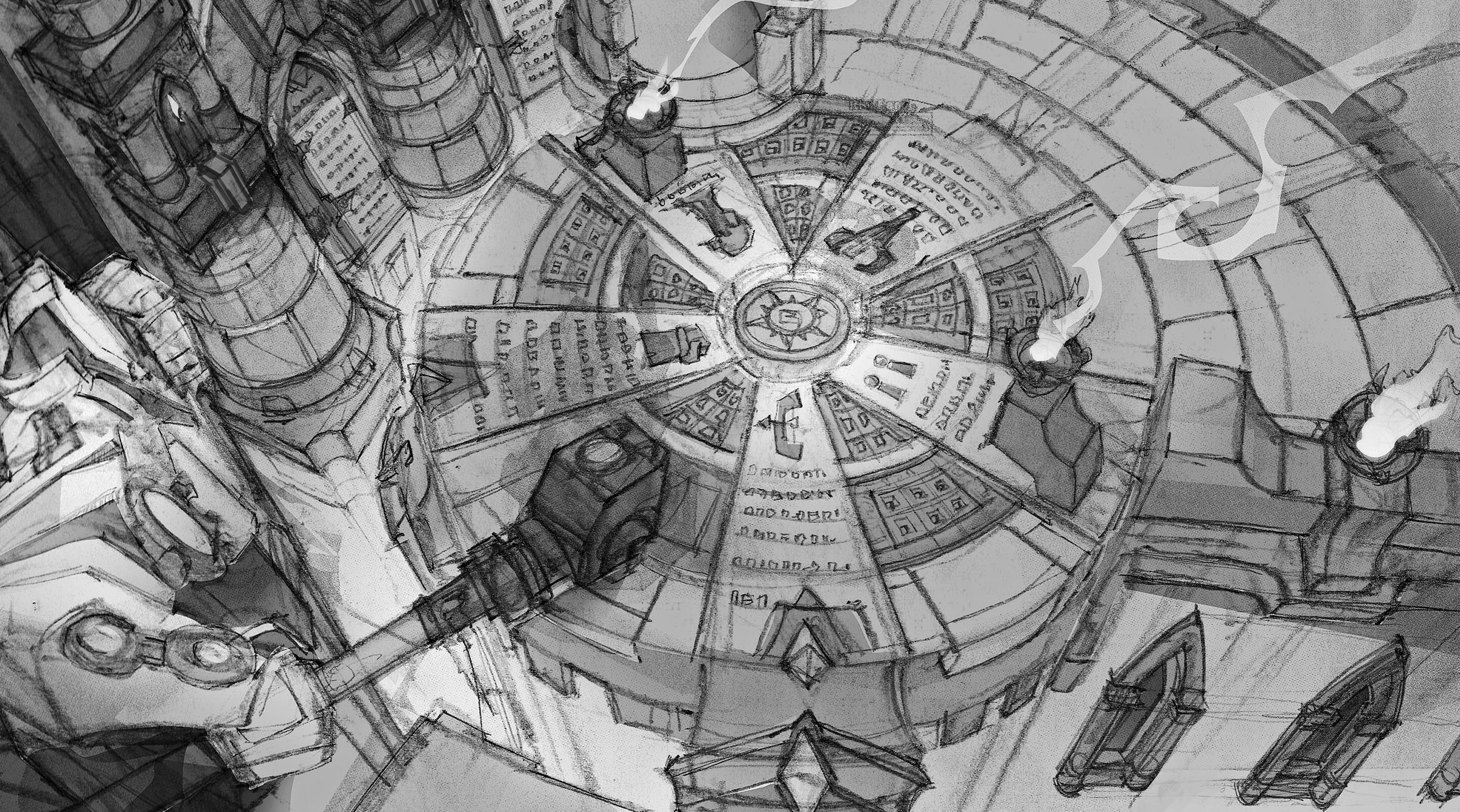
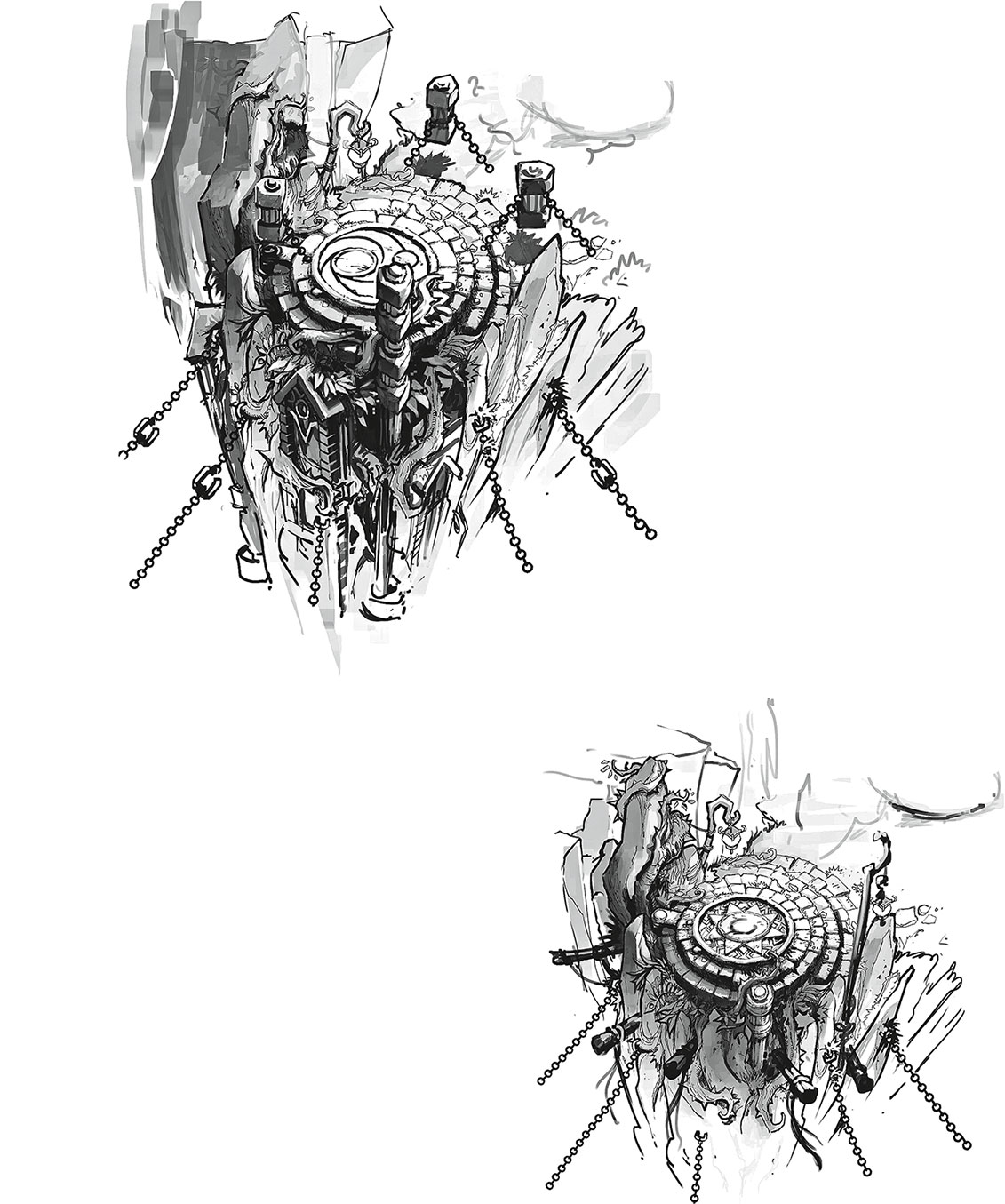
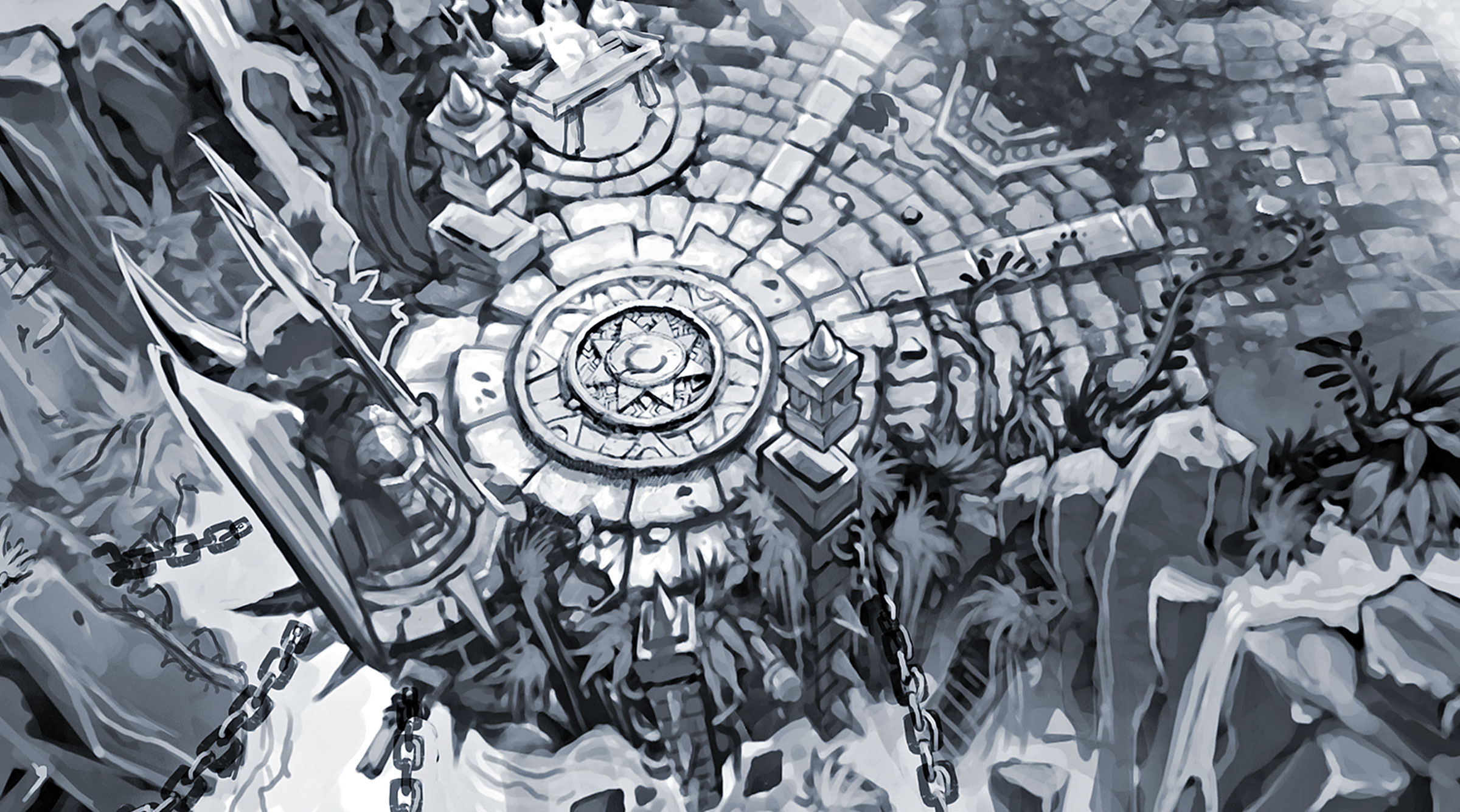
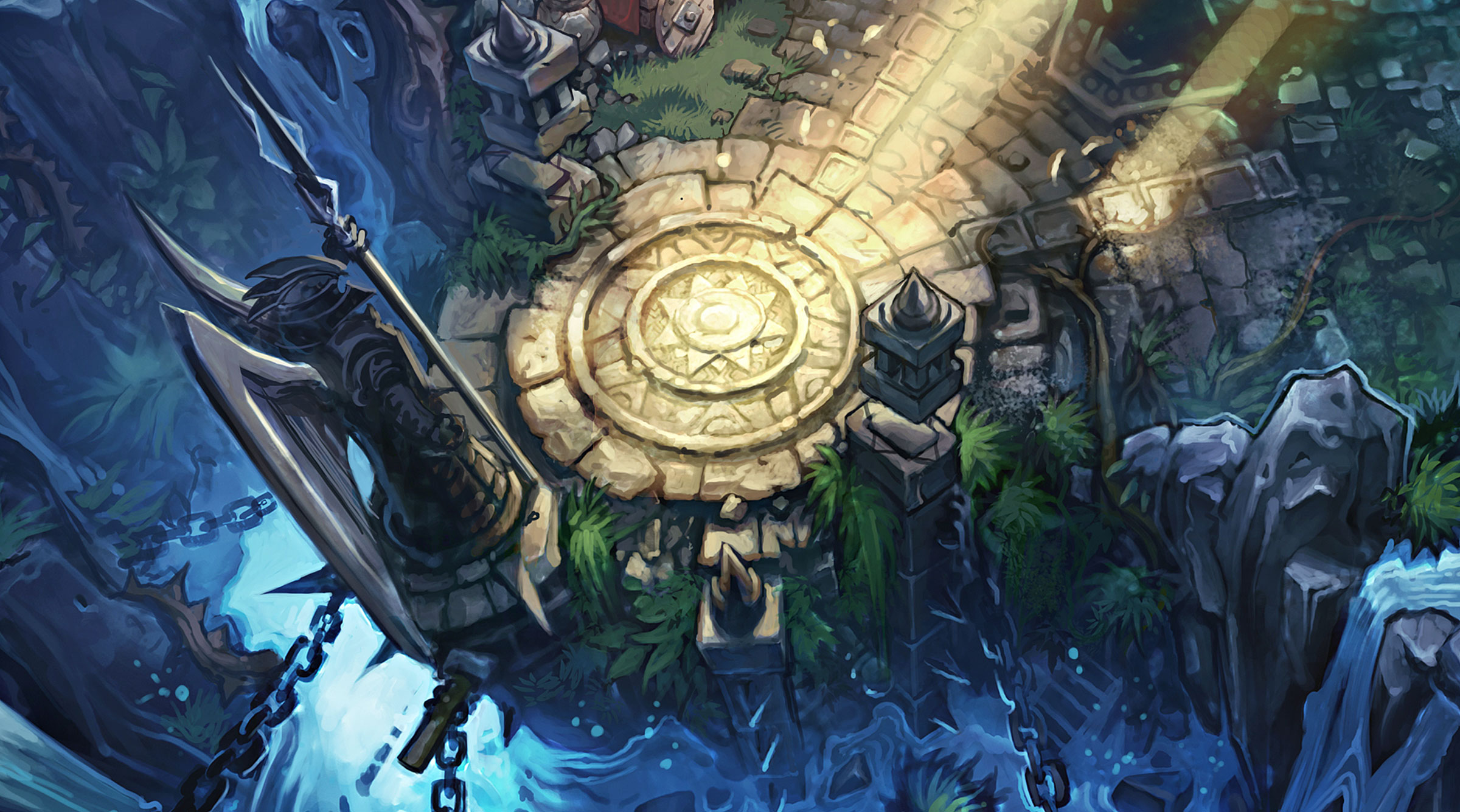
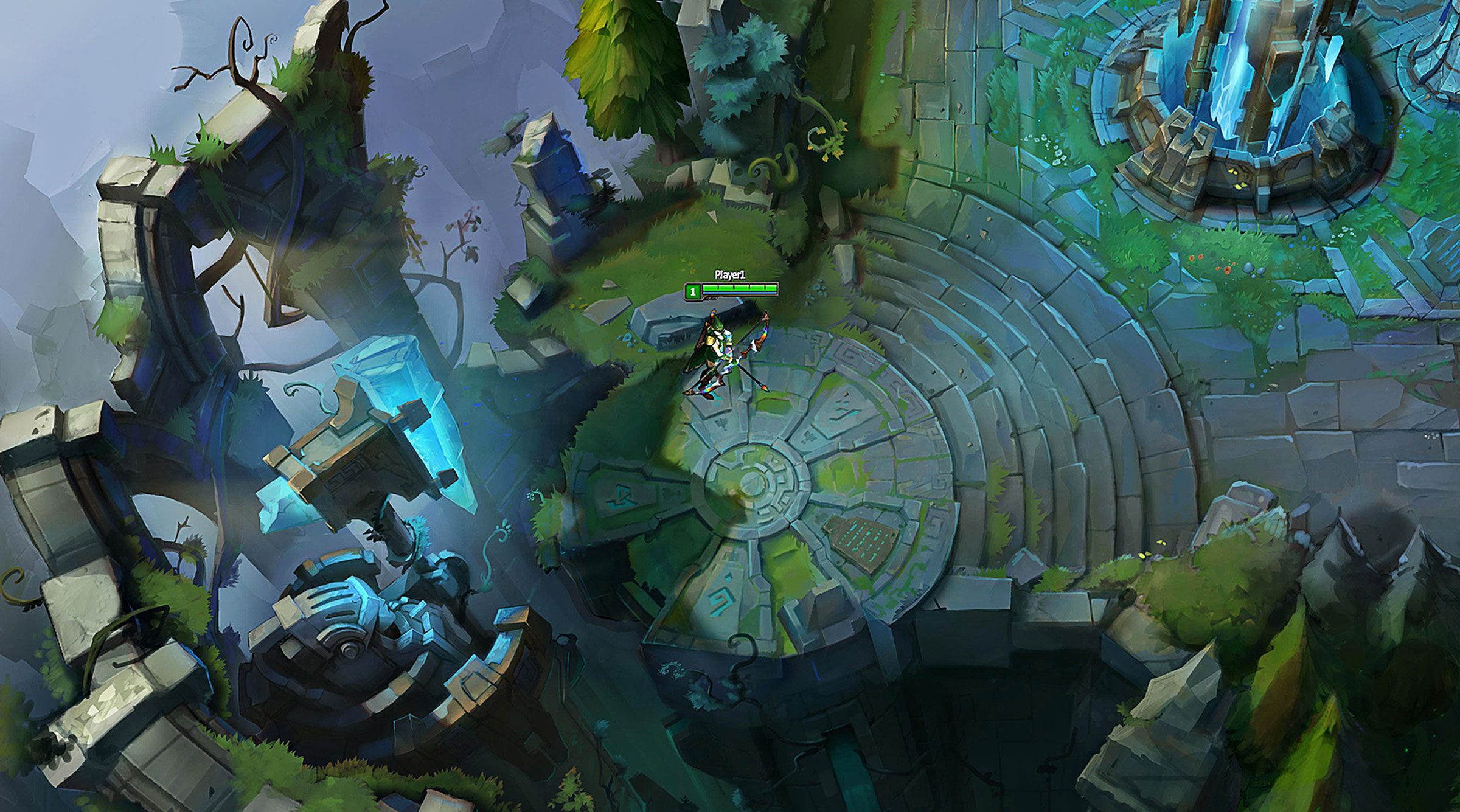
Environment—Red Base
The red side uses the owl as its main motif, with the nocturnal bird’s face etched into the architecture and rocks. Avian beaks even peek from the helms of the red base towers.
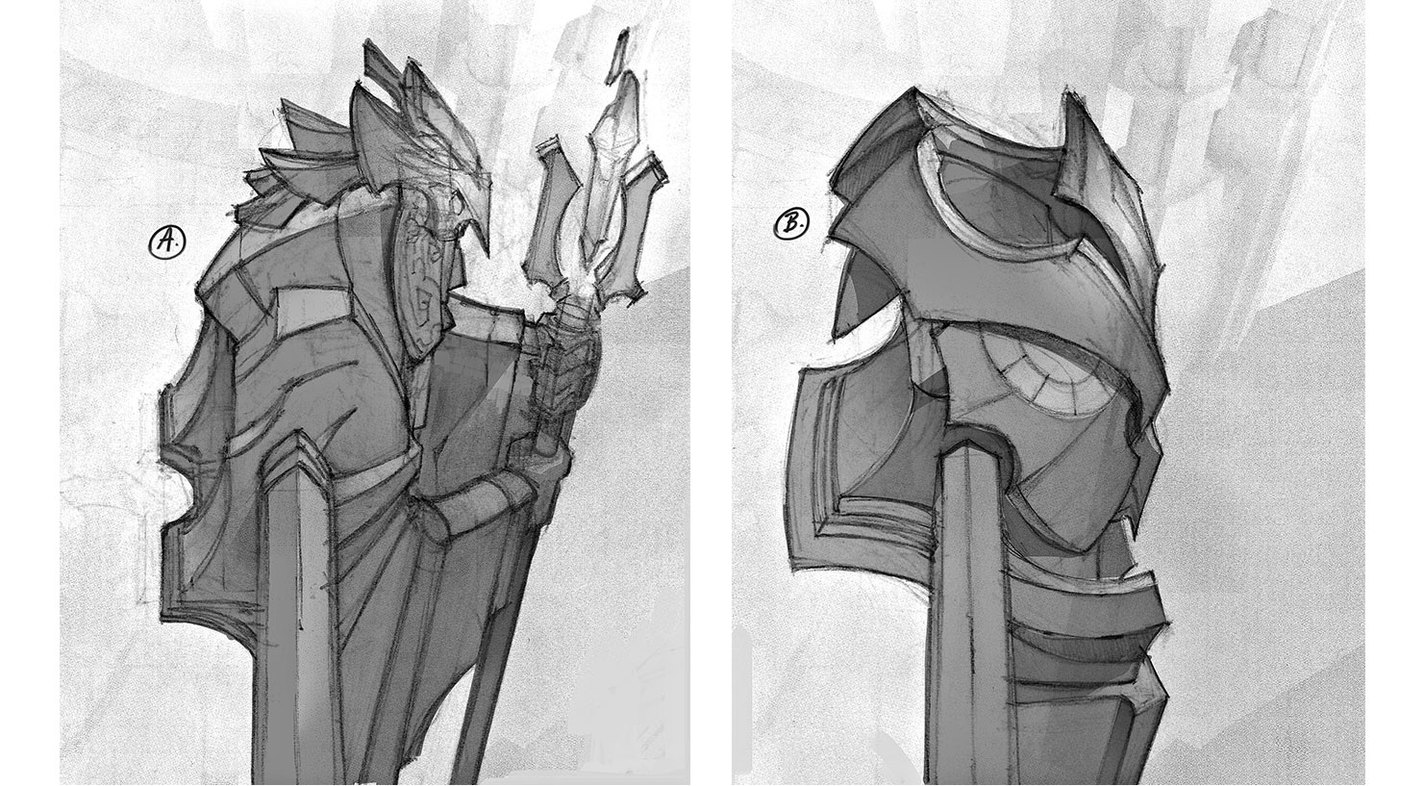

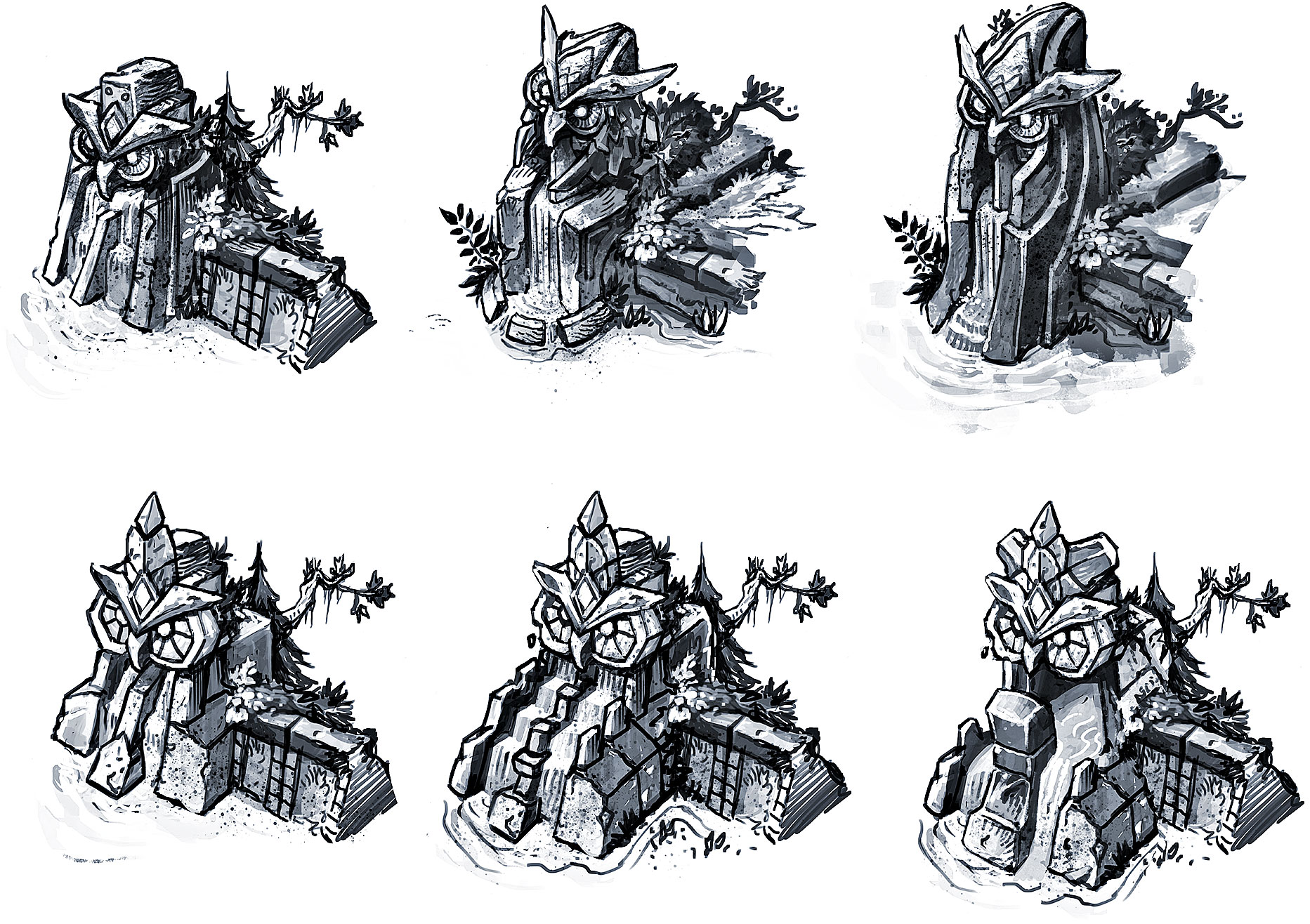
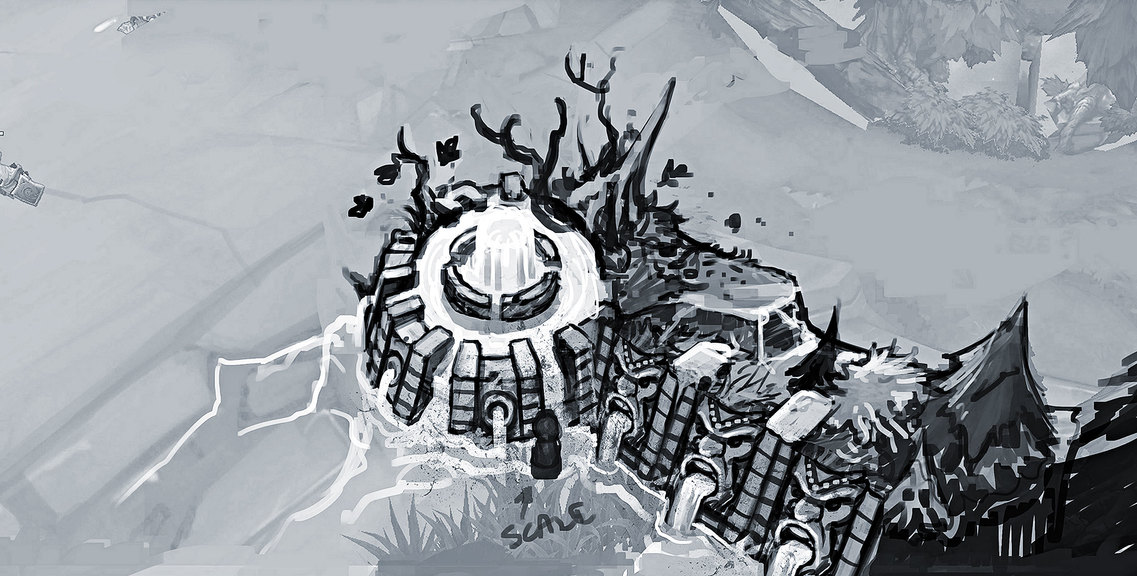
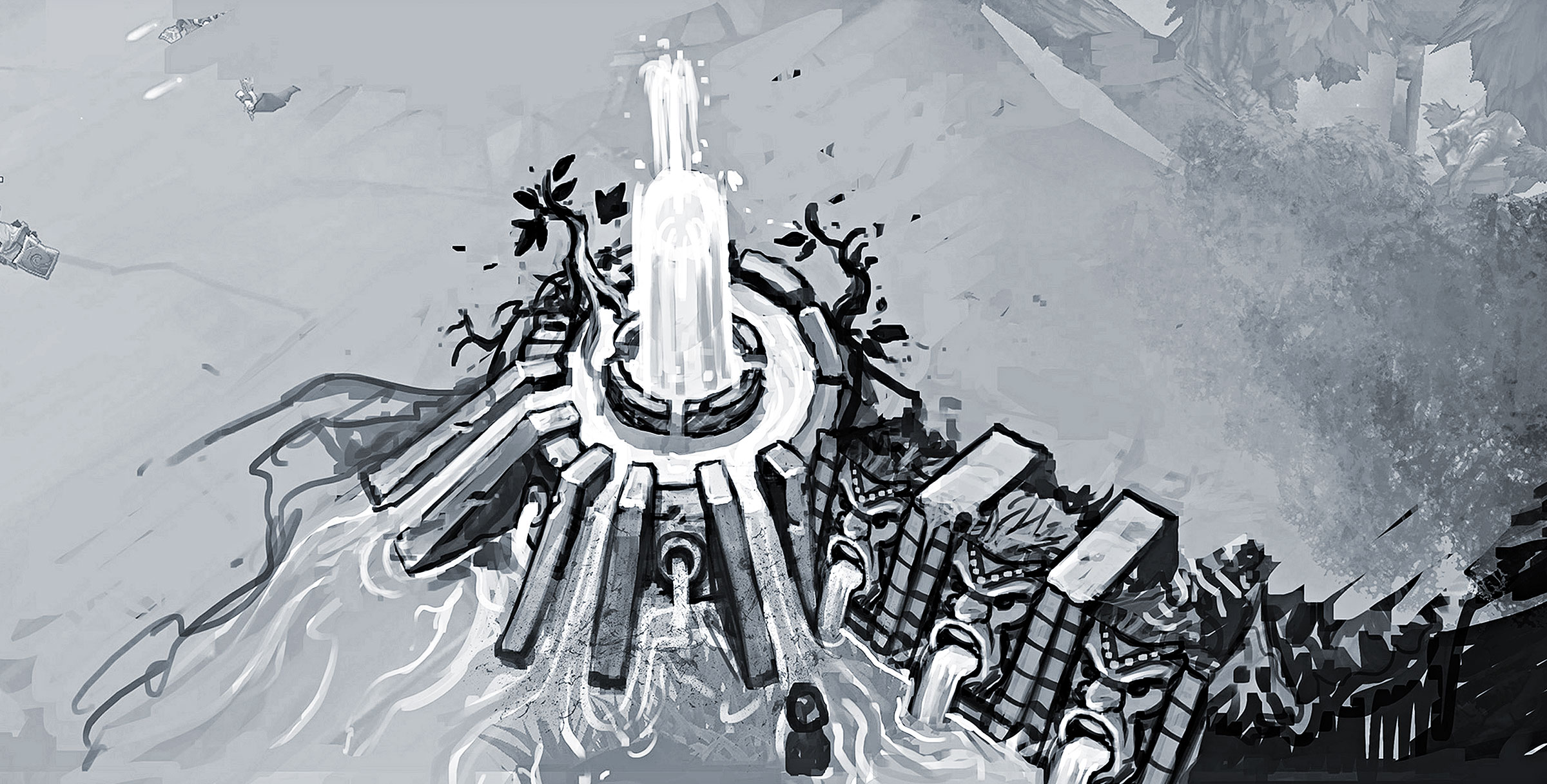
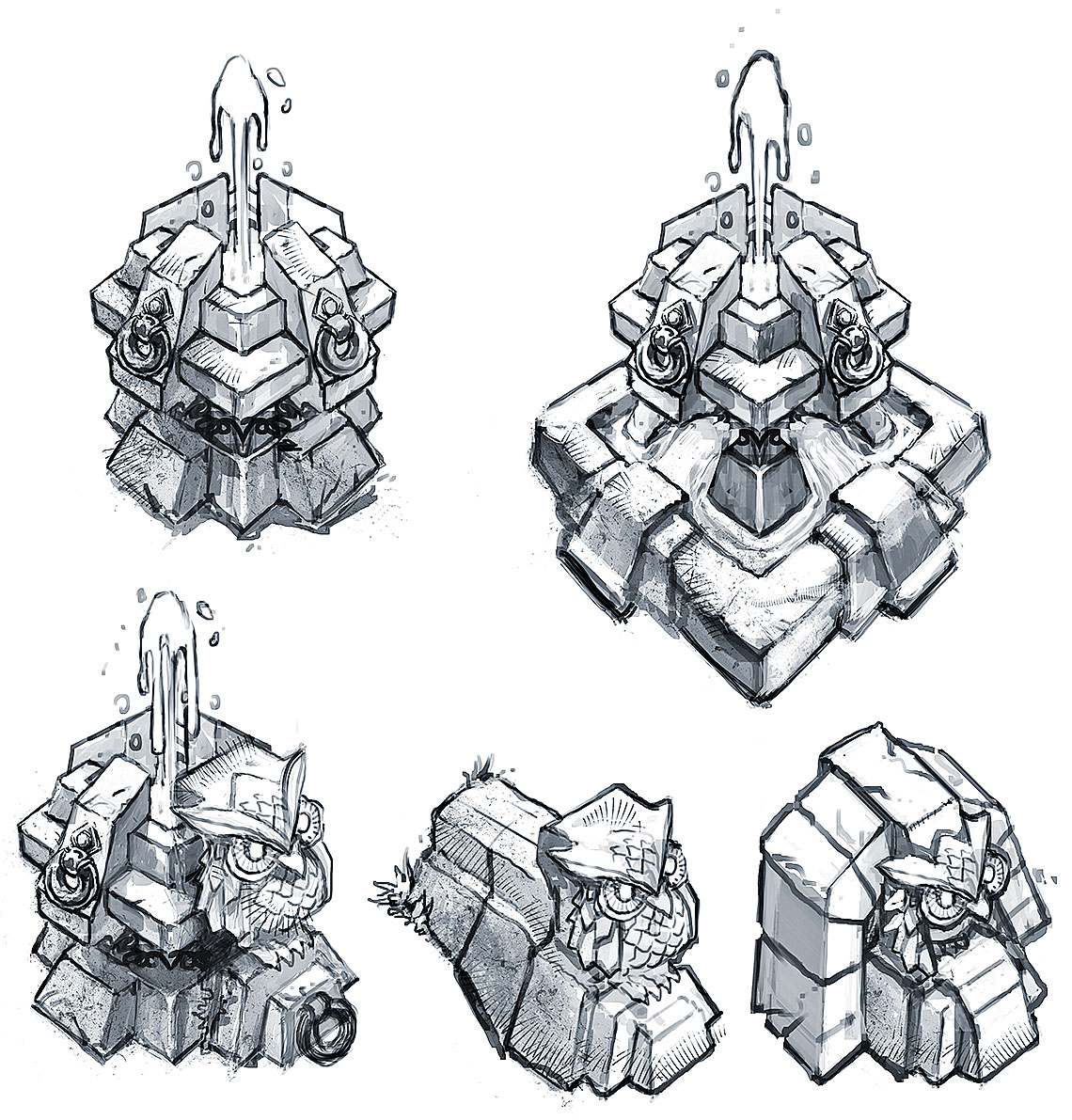
Shopkeepers—Summoner’s Rift
On the Rift, you’re only as good as the items you carry. Shopkeeper are crucial to victory, so we wanted to accentuate their role with better art. Each shopkeeper has a backstory visible in their surroundings. The walrus character who runs the red-side shop crash-landed in his balloon-powered flying machine. Blue side’s shopkeeper is an elderly yordle woman with an enormous pet she uses as a living storefront. These characters’ extra personality makes them more than a static shop that players simply click and leave. It becomes a place to regroup and power up with a familiar face who’s always in your corner.
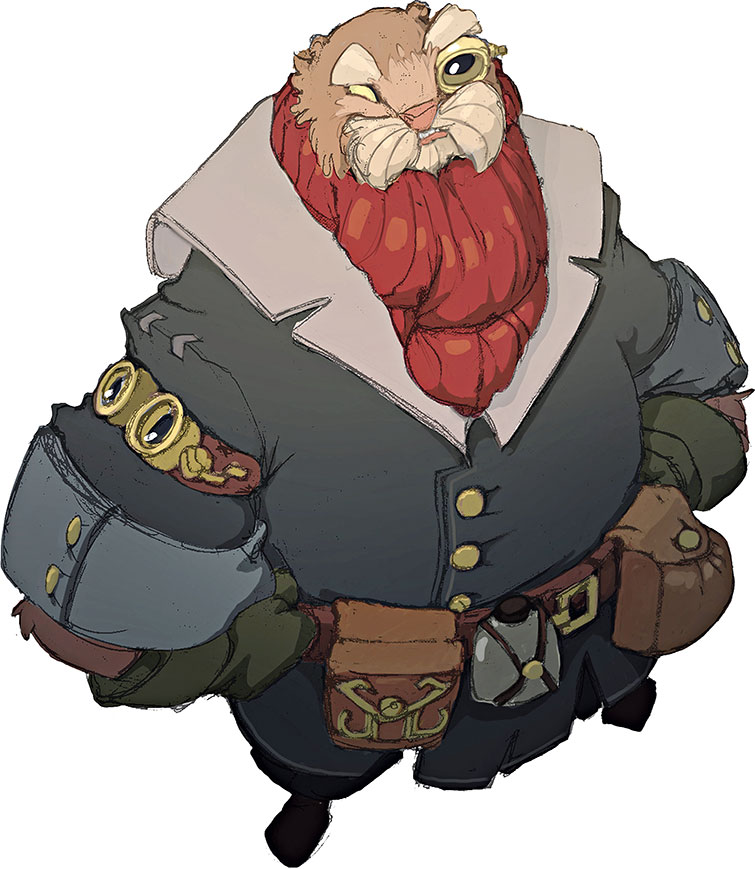
Creating our new shopkeepers was a long and arduous process, but the concept artists who worked on them developed a lot of love for some of the concepts generated along the way. Take, for example, the little goat creature who supports his body weight using his horns.
